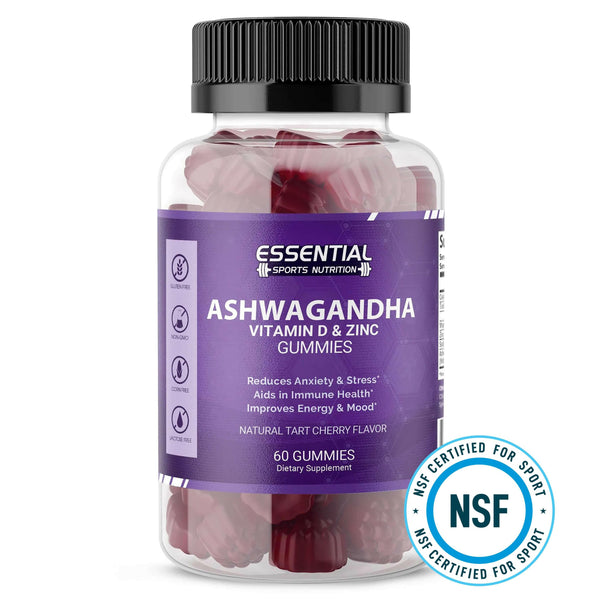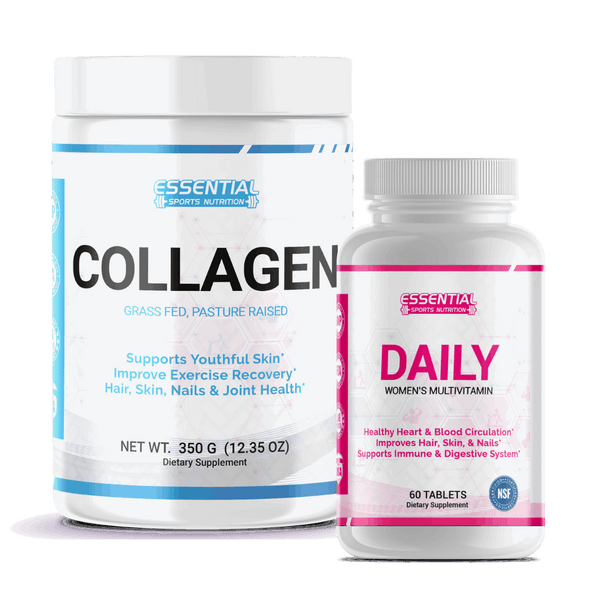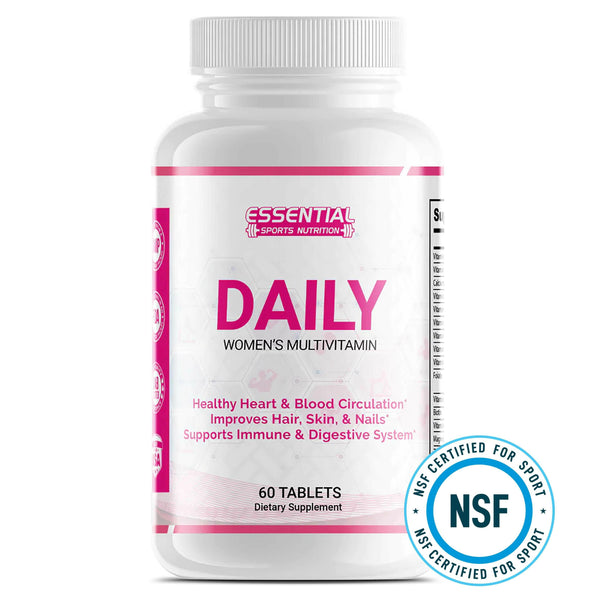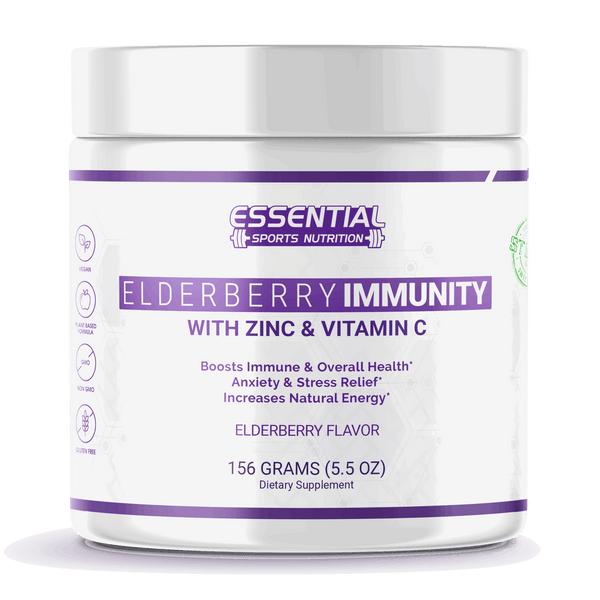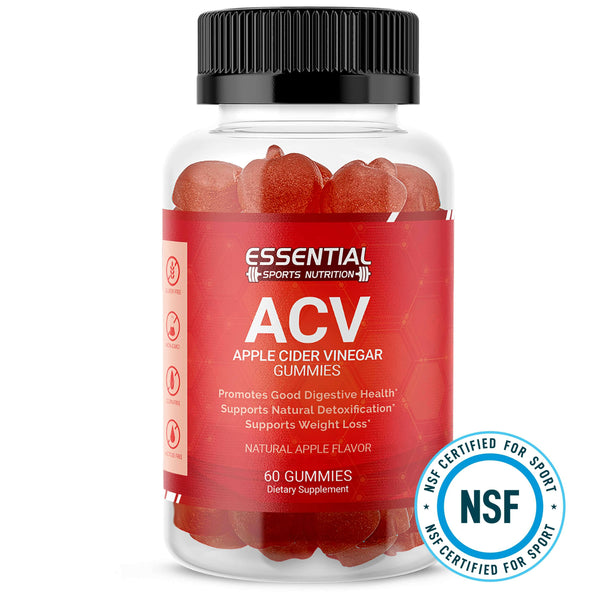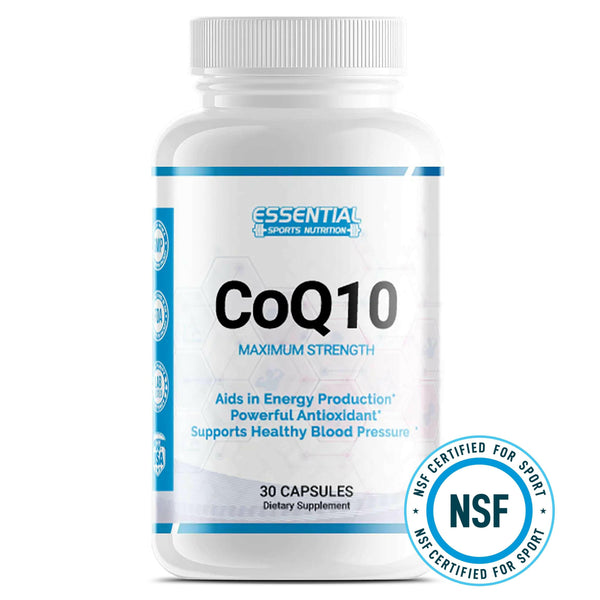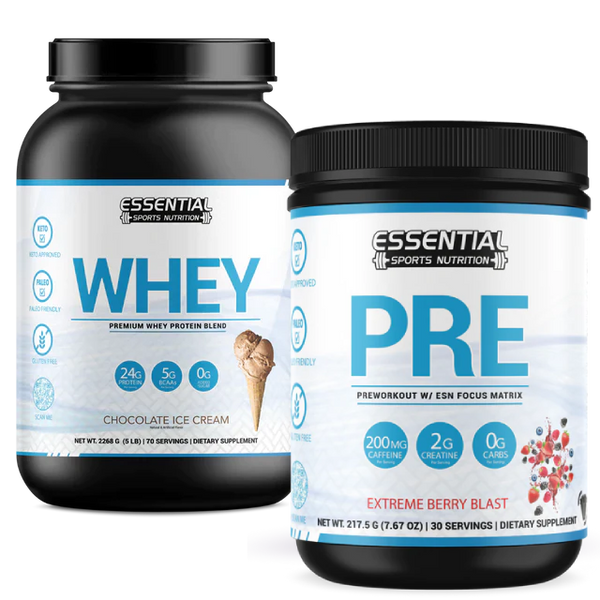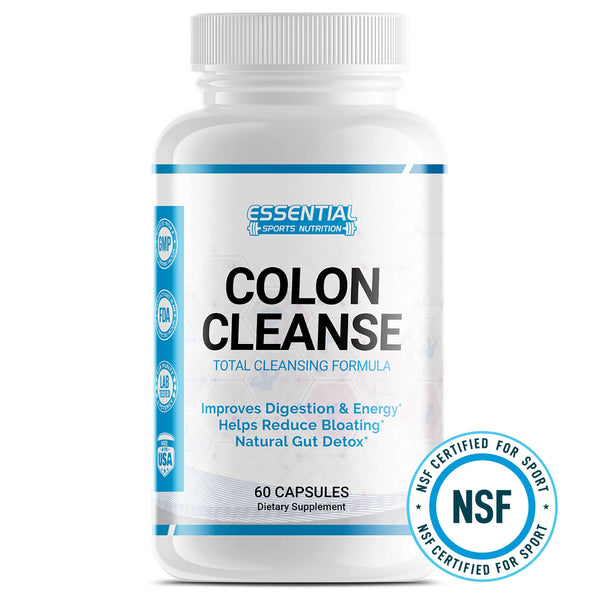Foods High in Omega-3 for Your Diet, Heart, and Overall Well-Being
Are you striving to enhance your overall well-being by integrating foods high in omega-3 into your routine? You're on the right track! Omega-3 fatty acids have a stellar reputation for their ability to bolster your brain and body health, functioning as essential fats that our bodies can't produce independently. The journey to a wholesome diet can be both delicious and nutritious with an array of omega-3-rich foods at your disposal. From the bounty of the sea to the harvest of the land, the sources of omega-3 fatty acids are diverse and readily accessible.
Understanding the significance of dietary omega-3 is paramount. Leading health organizations advise adults to aim for a consumption window between 250-500 mg daily of EPA and DHA - a goal obtainable through indulging in two servings of fatty fish each week. If you're curious about the best omega-3 foods and how they can fit into your diet, you're embarking on a fruitful journey toward health excellence.

Key Takeaways
-
Omega-3s are vital for cognitive function and overall health, yet the body doesn't naturally produce them.
-
Consuming 250-500 mg of EPA and DHA daily is recommended, typically from two servings of fatty fish a week.
-
Plant-based omega-3 options like flaxseeds and chia seeds cater to non-fish eaters and provide necessary ALA.
-
A comprehensive omega-3 intake includes a balance of plant and seafood sources.
-
Key sources such as mackerel, salmon, and walnuts are both versatile and rich in omega-3.
-
Gender-specific recommendations suggest higher ALA intake for those assigned male at birth versus female.
-
For optimal health benefits, learn to incorporate a variety of omega-3-rich foods into your diet.
The Importance of Omega-3 Fatty Acids in Your Diet
Omega-3 fatty acids are not just beneficial to your health; they are essential for it. As key components of a heart-healthy diet, EPA (eicosapentaenoic acid), DHA (docosahexaenoic acid), and ALA (alpha-linolenic acid) contribute to the health benefits that play a vital role in cardiovascular and cognitive health. Understanding the effects of omega-3s can help you tailor your diet for optimal health.
These essential fatty acids are abundant in nature, often sourced from both animal and plant foods. Including a variety of seafood and plant oils in your diet can achieve the omega-3 dietary balance needed to safeguard against certain chronic diseases. Regular consumption can contribute to reduced inflammation, aiding in the prevention of conditions like arthritis and heart disease, as well as cognitive decline associated with disorders such as Alzheimer's.
| Food Sources | Type of Omega-3 | Health Benefits |
|---|---|---|
| Fish (e.g., Salmon, Mackerel) | EPA & DHA | Supports heart health, brain function, and inflammation reduction |
| Plant Oils (e.g., Flaxseed, Canola) | ALA | Essential for overall health, with some conversion to EPA & DHA |
Your body can't produce these fatty acids, making it necessary to obtain them from your diet. Whether you are considering fish oil as a supplement or planning a menu rich in fatty fish and flaxseeds, your body will thank you for the contribution of these potent nutrients to your overall well-being.
Foods High in Omega-3

Unlocking the health benefits of omega-3 fatty acids is as simple as incorporating the right foods into your diet. The quest for top omega-3 foods takes us beneath the waves to the realm of oily fish and across the fields to an assortment of plant-based omega-3 sources. Enhancing your meals with these nutritious choices is not only a step towards better health but also a journey into a world of diverse and delicious flavors.
Fatty Fish Sources of Omega-3
When it comes to obtaining omega-3s, especially EPA and DHA, you can't go wrong with fatty fish. Among the champions of omega-3 fish sources, mackerel stands out with its rich, bold flavor and heart-healthy fats. Salmon, both wild-caught and farmed, is renowned for its vibrant color and versatility, easily earning its place atop the list of food sources of omega-3. But let's not overlook herring or sardines; these small, oily fish pack a powerful punch of nutrients and make for a convenient snack or meal additive.
Plant-Based Sources of Omega-3 Fatty Acids
For those who prefer plant-based omega-3 sources, there are plenty of options teeming with ALA. The mild, nutty taste of flaxseeds makes them a popular additive to smoothies and baked goods, while chia seeds can be used to create health-boosting puddings and jams. Walnuts offer a crunchy contrast in salads or as a brain-boosting snack. Soybeans, often overlooked, introduce versatility as they can be enjoyed as edamame, tofu, or tempeh, making them an integral part of a plant-forward omega-3-rich diet.
Understanding Omega-3: EPA, DHA, and ALA Explained
As you delve deeper into the world of healthy fats, it's important to understand the distinct types of the polyunsaturated fatty acid known as omega-3. This trio is extensively praised for their role in maintaining optimal health, but each has its unique functions and sources. Let's break down the core components—EPA, DHA, and ALA—and discover why these long-chain n-3 polyunsaturated fatty acids are essential in your diet.
The Distinct Health Benefits of EPA and DHA
EPA (eicosapentaenoic acid) and DHA (docosahexaenoic acid) are primarily found in fish oil and several types of cold-water fatty fish. These long-chain omega-3 polyunsaturated fatty acids are powerhouses in supporting heart health—they're effective in reducing cholesterol and lowering triglyceride levels. More than that, they play a crucial role in brain health and cognitive function, offering possible protective effects against conditions like Alzheimer's disease and dementia. Prioritizing these in your diet means you're taking direct steps toward a healthier heart and a sharper mind.
ALA: The Plant-Based Omega-3
Alpha-linolenic acid, or ALA, is a plant-based member of the omega-3 family and is found in abundance in flaxseeds, chia seeds, canola oil, and walnuts. Unlike its relatives EPA and DHA, ALA needs to be converted by the body into the long-chain forms to exert similar effects. However, this process is inefficient in humans meaning that only a small amount of the omega-3 polyunsaturated fatty acid consumed as ALA is transformed into EPA and DHA. Therefore, while ALA is an essential part of a healthy diet, it's beneficial to include direct sources of EPA and DHA as well.
Your understanding of these omega-3s is vital in optimizing their health benefits and knowing the best sources to integrate into your diet. While plant-based ALA is important, the direct consumption of EPA and DHA from fish and fish oil cannot be overlooked. Together, they complement your body's needs and fuel it with the right balance of essential fatty acids.
Seafood with the Highest Omega-3 Content

When it comes to maximizing your intake of EPA and DHA, nothing compares to the highest in omega-3 foods found in the sea. Delve into the bounty that the ocean provides, and you'll discover that cold-water fatty fish are the stars of the show. Each succulent bite of salmon or mackerel is not just a treat for your taste buds but also a boost for your health, thanks to their impressive omega-3 content.
If you're seeking the top omega-3 foods, look no further than the usual cold-water favorites. Here's the catch: not all seafood is created equal in terms of its omega-3 riches. Below is a table showcasing seafood that brims with these valuable fatty acids. Indulge in the likes of herring, sardines, alongside other delicacies such as oysters, caviar, and anchovies. Each of these options not only elevates your dining experience but also contributes significantly to meeting your daily recommended omega-3 intake.
| Fish Type | Omega-3 Content (per 100g serving) |
|---|---|
| Salmon | 2.5g EPA and DHA |
| Mackerel | 5g EPA and DHA |
| Herring | 1.7g EPA and DHA |
| Sardines | 1.4g EPA and DHA |
| Oysters | 0.7g EPA and DHA |
| Caviar | 1g EPA and DHA |
| Anchovies | 1.4g EPA and DHA |
Considering fish oil supplements? They can be a convenient way to get your EPA and DHA, yet nothing beats getting these nutrients directly from foods. Including a variety of seafood in your meals ensures you reap the diverse array of benefits these fats offer.
With a world that's more health-conscious than ever, ensuring you're getting the right omega fatty acids is crucial. Choose seafood for its nutrient density and for being highest in omega-3s, essential for maintaining a well-rounded, health-promoting diet.
Incorporating Omega-3 into Meals

Understanding how to seamlessly integrate omega-3s into your diet can be both fun and beneficial for your health. Let's explore some creative ways to get omega-3s through delicious recipes and simple meal planning strategies.
Creative Recipes with Omega-3 Rich Foods
Incorporating foods high in omega-3 doesn't have to be a daunting task. Start with some of these recipes high in omega-3 that are sure to delight your taste buds and boost your nutrient intake:
-
Begin your day with a chia seed pudding, made with a sprinkle of ground flaxseed for that additional omega-3 kick.
-
Enjoy a lunch of kale salad topped with grilled salmon, another way to enjoy a meal planning for omega-3 routine.
-
Dinner can be as simple as baking some herring or mackerel and serving it with a side of quinoa and roasted vegetables.
These foods containing omega-3 not only satisfy your palate but also contribute to your daily nutritional goals.
Simple Meal Planning Tips for Higher Omega-3 Intake
To ensure you're getting enough omega-3s in your diet, consider these straightforward yet effective meal planning tips:
-
Have a weekly omega-3 food list and include several servings of fatty fish like sardines or anchovies.
-
Mix in ground flaxseed or chia into your yogurt or oatmeal for an easy way to get omega-3s every day.
-
Sneak in some walnuts into your snacks, be it in homemade granola bars or a midday trail mix.
With these tips, you'll quickly find that meal planning for omega-3 is effortless and gratifying.
| Meal Time | Omega-3 Rich Food | Serving Ideas |
|---|---|---|
| Breakfast | Chia Seeds | Chia seed pudding with berries |
| Lunch | Salmon | Grilled salmon over mixed greens |
| Snack | Walnuts | Walnut-studded banana bread or trail mix |
| Dinner | Mackerel or Herring | Baked with herbs and served with quinoa |
Remember, incorporating a variety of foods containing omega-3 into your diet can be simple and highly beneficial. Now that you're armed with this information, you're all set to boost your intake of these essential nutrients and enjoy the health benefits they bring.
Omega-3s in Vegan and Vegetarian Diets
If you're following a vegan or vegetarian diet, you might wonder how to best incorporate vital nutrients like omega-3 fatty acids. While these essential fats are commonly associated with fish and seafood, there are numerous vegetarian sources of omega-3 that can help you fulfill your dietary needs without compromising your lifestyle choices.
One of the key components of omega-3 is ALA (alpha-linolenic acid), which is a form of plant-based omega-3. ALA is found abundantly in food items such as flaxseeds, chia seeds, walnuts, and soybeans. Your body has the ability to convert ALA into the more active forms of omega-3, EPA and DHA, although the process is not as efficient as getting them directly from animal sources. Regardless, these plant-based omega-3 sources are invaluable for maintaining a balanced diet.
For those who want a more convenient option or a more substantial omega-3 boost, vegan omega-3 supplements have emerged as a reliable source. Algal oil, for example, is a supplement derived from algae which can provide both EPA and DHA and is 100% plant-based, making it suitable for a vegan diet. Including a high-quality omega-3 supplement can be an effective way for vegans and vegetarians to ensure they are not missing out on these fundamental nutrients.
Here's a breakdown of some of the top vegetarian and vegan sources of omega-3:
-
Flaxseeds: Rich in ALA omega-3, they can be ground for better absorption and added to smoothies, cereals, or baked goods.
-
Chia Seeds: Also high in ALA omega-3, they can be incorporated into puddings or mixed into oatmeal.
-
Walnuts: A handful of these is a great snack that also boosts your ALA omega-3 intake.
-
Soybeans: Tofu and tempeh, made from soybeans, are protein-rich foods that provide plant-based omega-3.
If you're considering integrating omega-3 supplements into your diet, keep in mind that quality varies and it's essential to choose trusted brands and products. Trustworthy supplements should have transparency about their EPA and DHA content and sourcing, ensuring that you can consume them with confidence.
By consciously adding these foods into your routine, you can ensure that you're meeting your body's requirements for omega-3s. The key is to maintain variety and consistency in your diet for long-term health and well-being.
The Role of Fish Oil and Omega-3 Supplements

If you're considering taking omega-3 supplements, you are not alone. Many turn to fish oil supplements to ensure they receive enough essential fatty acids in their diet. Whether due to dietary restrictions, aversions to fish, or simply as a convenience, these supplements can be an effective way to maintain balanced health.
When to Consider Omega-3 Supplements
It may be wise to consider fish oil supplements if you are not regularly consuming fish or sources of omega-3 and omega-6. Particularly, individuals with specific health concerns or those with elevated triglyceride levels might find that high doses of omega-3 can offer significant health benefits. However, it's imperative to consult with your healthcare provider before starting any new supplement regimen.
Choosing the Right Omega-3 Supplement
Selecting the right omega-3 supplement involves more than just grabbing the first bottle off the shelf. You should look for supplements that offer the right form of omega-3, whether it be EPA, DHA, or a combination of both, as well as verifying the supplement's purity. The intake of omega-3 should be based on a well-informed choice, with a brand that has a reputation for quality and transparency.
The Health Benefits of Omega-3 Consumption

Unveiling the spectrum of health benefits associated with omega-3 fatty acids can be a revelation in unfolding how dietary choices directly correlate to our well-being. This essential nutrient, primarily found in fish and seafood, is a cornerstone for both cardiovascular health and cognitive function. Let's dive deeper into how these fatty acids can shape your body's health.
Cardiovascular Health and Omega-3
When it comes to fatty acids and cardiovascular disease, omega-3 polyunsaturated fatty acids (PUFAs) are celebrated for their part in reducing the heart's vulnerability to various conditions. By integrating foods rich in these nutrients into your diet, you create a line of defense against coronary artery disease and work to mitigate the associated risks. The American Heart Association acknowledges the benefits of omega-3s by recommending the inclusion of fatty fish for a well-rounded, heart-healthy diet.
Inflammation can be a trigger for cardiovascular issues, and that’s where omega-3s shine, as they possess anti-inflammatory properties that contribute to arterial health. Embracing a diet that incorporates polyunsaturated fatty acids can thus be pivotal in reducing the risk and incidence of inflammation-related heart diseases.
Cognitive Benefits and Dietary Omega-3
The consumption of omega-3s goes beyond the heart, extending its reach to our brain health. Research has unearthed a connection between diets rich in omega-3 fatty acids and a decreased progression of cognitive decline disorders, including Alzheimer’s disease. These findings suggest that polyunsaturated fatty acids play a role in maintaining not only body but also brain vitality as we age.
As we continue to explore the benefits of omega-3s, it becomes evident that these nutrients offer a robust approach towards enriching our health. Whether aiming to safeguard your heart or to bolster your cognitive abilities, these fatty acids offer a promising prospect for a healthier, more vibrant lifestyle.
Omega-3 Rich Nuts and Seeds

When you're looking to boost your intake of omega-3 fatty acids, turning to certain omega-3 rich nuts and omega-3 seeds can be a smart and delicious choice. These little powerhouses are not only sources of the healthful alpha-linolenic acid (ALA), a type of plant-based omega-3, but also pack in other nutrients that benefit overall well-being. Including a variety of these can diversify your nutrient intake, making your diet richer and more enjoyable.
| Omega-3 Source | ALA Content | Other Nutrients |
|---|---|---|
| Flaxseeds (ground) | 1.8 grams per tablespoon | Fiber, Antioxidants, Protein |
| Chia seeds | 2.5 grams per tablespoon | Fiber, Calcium, Phosphorous |
| Walnuts | 2.5 grams per ounce | Vitamin E, Copper, Manganese |
Flaxseed omega-3 is particularly noteworthy for its high concentration, making it a staple in the plant-based omega-3 lineup. Whether you sprinkle ground flaxseeds over your morning oatmeal or blend them into a smoothie, you're infusing your meal with an essential nutrient that supports heart health.
Chia seeds omega-3 content makes them another excellent choice for boosting ALA intake. Mix them into yogurt, puddings, or bake them into breads - these versatile seeds expand and take on a gel-like consistency, lending a unique texture to your dishes.
Don't forget about walnuts omega-3 content; these nuts make a flavorful snack and enhance the profile of salads and baked goods. A handful of walnuts can provide a significant portion of your daily ALA omega-3 needs along with added antioxidants.
Omega-3 seeds and nuts not only contribute to your nutrient intake but also bring different textures and flavors to your meals, making food more exciting and nutritious.
Balancing Omega-3 and Omega-6 Fatty Acids

Understanding the omega-3 and omega-6 balance is pivotal to maintaining a diet that fosters optimal health. These essential fatty acids each play unique roles within the body and require harmonious levels for well-rounded nutritional benefits. Modern dietary habits, however, have leaned towards a higher consumption of omega-6s—often found in processed foods and certain vegetable oils—potentially unsettling this crucial balance.
To rectify this tilt in fatty acid profiles, you'll want to emphasize the intake of foods rich in omega-3s. These are typically found in cold-water fatty fish, such as salmon and mackerel, and in a variety of nuts and seeds, broadening the scope for diverse fatty acid profiles. This shift can lead to a reduction in inflammatory responses, a key marker of health and disease prevention.
It's not just about increasing omega-3s but also about being mindful of the types of fats consumed overall. Since monounsaturated fatty acids are another critical component of a heart-healthy diet, selecting the right balance between these and your omega fatty acids can elevate your nutritional status. Picking the best foods for this isn't as daunting as it may seem. Here's a simple guide.
| Fatty Acid | Common Sources | Desired Balance |
|---|---|---|
| Omega-3 | Cold-water fatty fish, flaxseeds, chia seeds, walnuts | More omega-3s relative to omega-6s |
| Omega-6 | Processed foods, grain-fed meats, many vegetable oils | |
| Monounsaturated Fatty Acids | Olive oil, avocados, almonds | A significant portion of daily fat intake |
Be proactive with your dietary choices. A meal rich in omega-3 rich foods such as sardines on whole-grain bread, a salad topped with a flaxseed oil dressing, or a handful of walnuts as a snack can pave the way for better health. When you anchor your diet with these nutrient-dense foods, you're setting the stage for a life brimming with vitality.
Identifying and Avoiding Omega-3 Deficiencies

Be mindful of omega-3 deficiency, a condition often subtle in its onset but with outcomes that can significantly impact your well-being. Recognizing early signs is essential, such as unusual skin dryness or an odd rash, but awareness of the effects of omega-3s on overall health is vital. Many don't realize the integral role omega-3s play until they experience deficiency symptoms. Fortunately, being in the United States puts a wealth of food sources, including fortified foods and dietary supplements, within easy reach to help manage omega-3 levels.
To steer clear of deficiency, adhere to dietary recommendations for omega-3. These guidelines propel you toward a diverse intake of rich sources like fatty fish, seeds, and nuts. And in the event that you detect a gap in your diet, remember omega-3 supplements stand ready as a trusty substitute.
-
Ensure variety in your diet with foods like salmon, walnuts, and flaxseeds to naturally boost omega-3 levels.
-
Consider fortified foods such as omega-3 enriched eggs if you're not a fan of seafood.
-
Be proactive with omega-3 dietary supplements, particularly if you follow a vegetarian or vegan diet.
By being conscious of your omega-3 intake and making it a routine part of your diet, you can glean the protective and proactive benefits of these essential fats. Your body – and brain – will thank you for it.
Conclusion

Achieving your nutritional goals becomes substantially more attainable when you weave a variety of omega-3-rich foods into your diet. Fish, seeds, and plant oils stand out as the cornerstones of a health-promoting diet that's high in these essential fats. Whether you're opting for the fatty richness of salmon or the subtle crunch of walnuts, your dietary landscape offers ample opportunities to fulfill the recommended omega-3 intake without sacrificing flavor or diversity.
Reaching Your Dietary Omega-3 Goals
Steps towards better health decisions definitely includes making informed choices about your intake of omega-3s. Keeping tabs on the latest nutritional guidance ensures you're not just meeting but optimizing your intake. Consider introducing a blend of seafood, plant-based oils, and a variety of nuts and seeds to your plate, crafting a well-rounded and nourishing diet. Each addition to your meal plan is a stride toward overall well-being, reinforcing the significance of these powerhouse nutrients.
Next Steps and Further Reading
For those eager to delve deeper into the world of omega-3s, authoritative resources like the Office of Dietary Supplements and USDA's Food Data Central await your exploration. These platforms are treasure troves of valuable insights, solidifying your understanding of omega-3 fatty acids and their integral role in a health-promoting diet. If your curiosity seeks tailored nutritional guidance, seeking professional advice can pave the way for a customized approach to your omega-3 consumption, ensuring your diet supports your health ambitions in every bite.
Effects of Omega-3s FAQs
Q: What are omega-3s and why are they important?
A: Omega-3s are essential fatty acids that play a crucial role in brain function and overall health. They are considered important for heart health, eye health, and can even help with inflammation.
Q: What are some foods high in omega-3s?
A: Foods high in omega-3s include fatty fish (such as salmon, mackerel, and sardines), flaxseeds, chia seeds, walnuts, and hemp seeds.
Q: Can I get enough omega-3s from my diet alone?
A: While it is possible to get omega-3s from your diet, some people choose to supplement with omega-3 capsules to ensure they are meeting their daily requirements.
Q: Are there any health benefits associated with omega-3s?
A: Yes, omega-3s have been linked to a variety of health benefits, including reduced risk of heart disease, improved brain function, and decreased inflammation in the body.
Q: What is the difference between omega-3 and omega-6 fatty acids?
A: Omega-3 and omega-6 fatty acids are both essential fats, but they have different functions in the body. While omega-3s are known for their anti-inflammatory properties, omega-6s are more pro-inflammatory.
Q: Are there any side effects of taking omega-3 dietary supplements?
A: In general, omega-3 dietary supplements are safe for most people. However, high doses can cause issues like blood thinning, so it's important to consult with a healthcare provider before starting any new supplement regimen.
Q: Are there any foods and beverages that are fortified with omega-3s?
A: Yes, many products are now fortified with omega-3s, such as certain types of milk, yogurt, and breakfast cereal. Always check the label to see if a product has been fortified with omega-3s.



